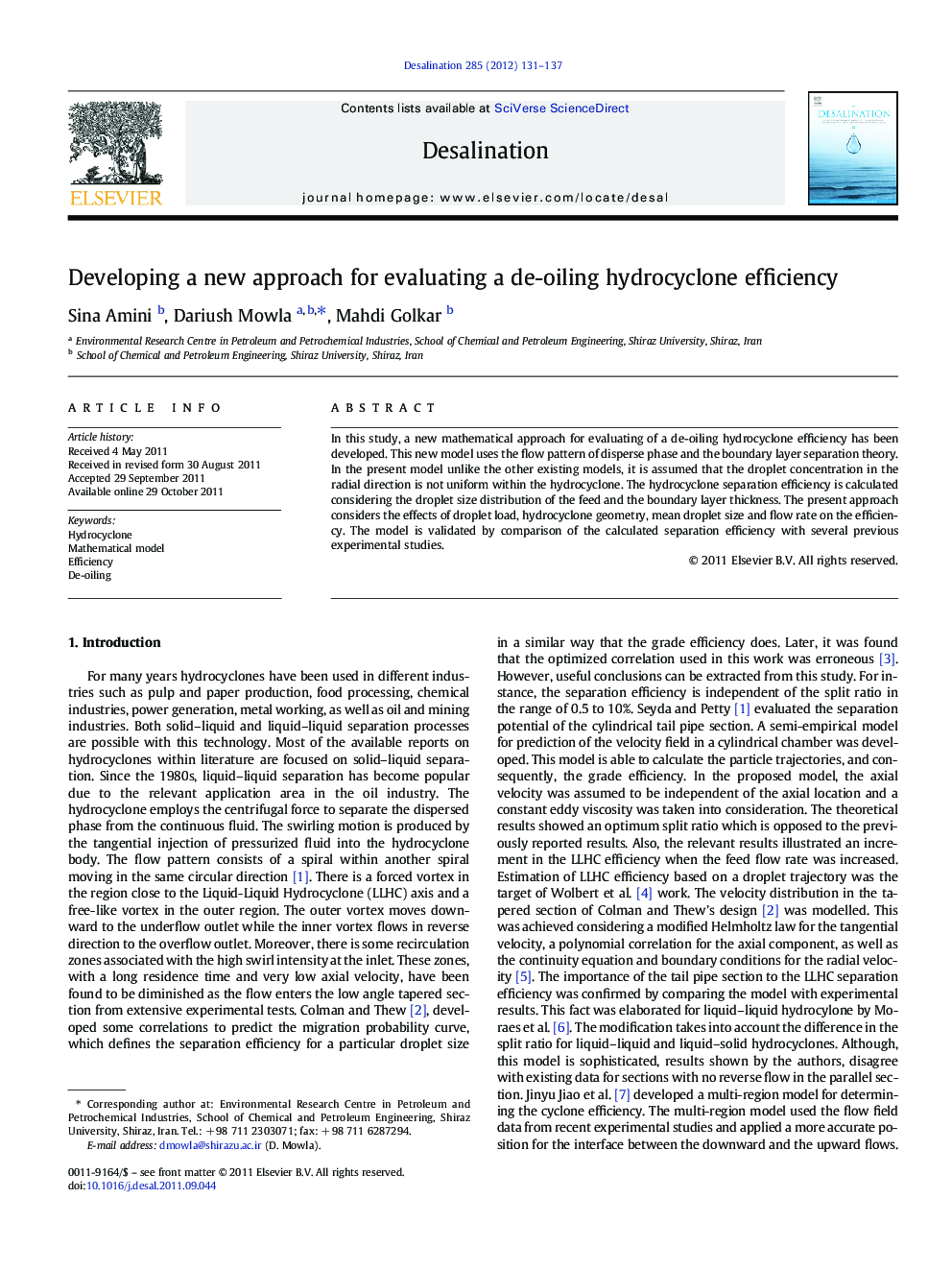| کد مقاله | کد نشریه | سال انتشار | مقاله انگلیسی | نسخه تمام متن |
|---|---|---|---|---|
| 624717 | 1455406 | 2012 | 7 صفحه PDF | دانلود رایگان |

In this study, a new mathematical approach for evaluating of a de-oiling hydrocyclone efficiency has been developed. This new model uses the flow pattern of disperse phase and the boundary layer separation theory. In the present model unlike the other existing models, it is assumed that the droplet concentration in the radial direction is not uniform within the hydrocyclone. The hydrocyclone separation efficiency is calculated considering the droplet size distribution of the feed and the boundary layer thickness. The present approach considers the effects of droplet load, hydrocyclone geometry, mean droplet size and flow rate on the efficiency. The model is validated by comparison of the calculated separation efficiency with several previous experimental studies.
► A new mathematical approach was developed for evaluating of hydrocyclone efficiency.
► The model is based on disperse phase flow pattern and the boundary layer theory.
► It is assumed that droplet size distribution obeys the log–normal function.
► The efficiency is calculated considering the droplet size distribution of the feed.
Journal: Desalination - Volume 285, 31 January 2012, Pages 131–137